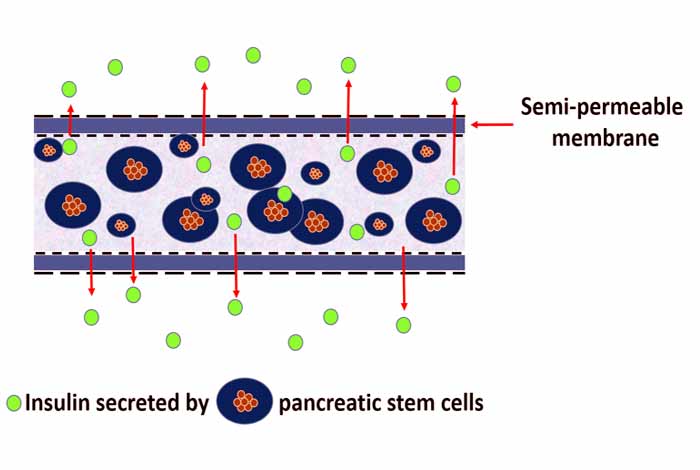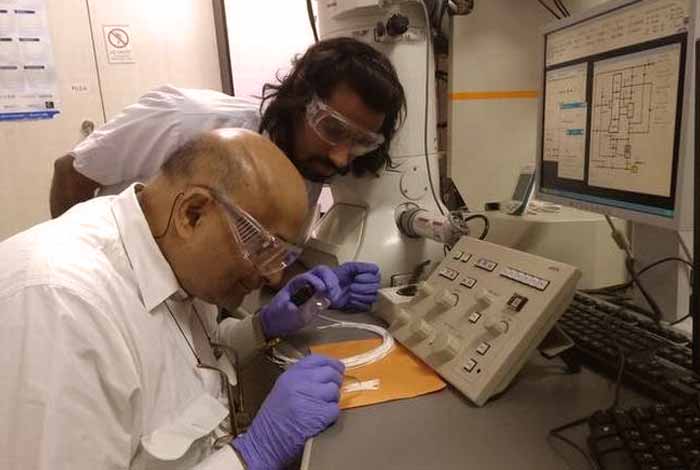
A Bioartificial Pancreas Brings a New Hope for Diabetics

Following several successful clinical tests on mice, the researchers at Indian Institute of Technology Bombay (IIT-B), India have developed a polymer-based bioartificial pancreas that can be implanted in diabetics for managing the condition. Though, it is still far from being used for treating diabetes in humans, its progress has given a new hope for diabetics all around the world.
Diabetes is a chronic metabolic disorder wherein blood sugar levels in the blood are very high. In a normal person, the body significantly breaks up carbohydrates into glucose for energy. A hormone known as insulin which is produced in the pancreas, aids this conversion. However, in a person with diabetes, either the body is unable to produce enough insulin (Type-1 diabetes) or cannot utilize the insulin (Type 2 diabetes). In certain cases, it could be due to both reasons.
For treating Type 1 diabetes, a disease affecting almost 17 out of every 100,000 children doctors prescribe use of insulin pumps, insulin injections, or transplantation of either islet cells which are responsible for insulin reduction or the whole pancreas [1]. However, a persistent issue with transplantation is biocompatibility. The body treats any transplanted organ as a ‘foreign’ object, thereby triggering an immune response, which can eventually degrade the transplanted organ’s function. In this case, unfortunately, bioartificial pancreas would also be treated as “foreign” by the body.
More About This Breakthrough Research
To overcome this problem, the researchers made patented hollow fiber membranes using a polymer known as polysulfone along with an additive compound, d-α-Tocopheryl polyethylene glycol 1000 succinate (TPGS).
The research for this ambitious project was initiated back in 2008, considering India is infamously known as “diabetes capital of the world”. There are staggering 40 million diabetics in the country alone.
Prof. Jayesh Bellare from Chemical Engineering department at IIT-B led this research along with few students.[2] He explained that this hollow fiber membrane is an extremely narrow tube which is about 1 mm in diameter with pores in its wall.
This bioartificial pancreas which is produced using polymer based hollow fiber membrane can grow and also harbor insulin producing cells. Prof. Bellare added when liquid is passed through this hollow tube (lumen), the wall can selectively retain certain constituents while simultaneously allowing others to pass through it. He explains that this kind of ‘selective separation’ is utilized in myriad of processes including dialysis.
Polysulfone is known for its stability and toughness. And, the hollow fiber membrane supports the cells’ growth by mimicking the extracellular matrix wherein the cells grow naturally. The hollow fiber membrane allows insulin to reach the diabetic while parallelly preventing an immune reaction from occurring.
The inner side of the hollow fiber membranes has pores in the nanometer range and these pores are responsible for selective separation of insulin. The remaining membrane is far more porous and has larger pores which provide sufficient support. The researchers placed together these hollow fibers to create a small bioreactor where insulin is produced. This is how they created this evolutionary bioartificial pancreas.

The device was tested with both human stem cells that were derived from umbilical cord and islet cells from pig’s pancreas. The researchers implanted these bioartificial pancreas into mice with diabetes for 30 days. They found that these bioartificial implants did not cause any abnormalities to any other organs. Additionally, the immune cells of diabetic mice did not attack implants either. Surprisingly, blood vessels also flourished on the cells of the pancreas.
This breakthrough research has a potential to improve life quality of so many people living with Type-1 diabetes. The researchers at IIT-B are planning to continue studying how this new implant behaves in larger animals and then in humans. Prof. Bellare states that it would take time to test these implants in humans but their device has got the basic requirements to help manage diabetes. Hopefully, this can halt the ginormous diabetes epidemic in India and the world.










